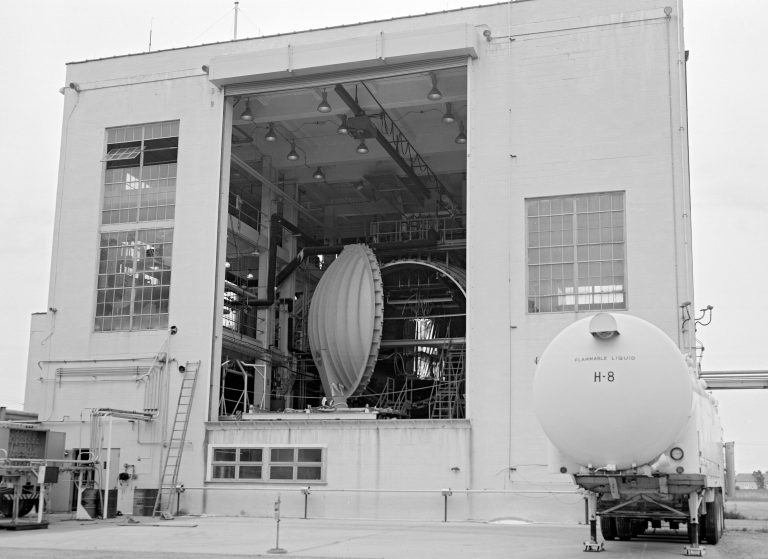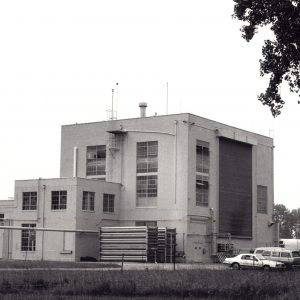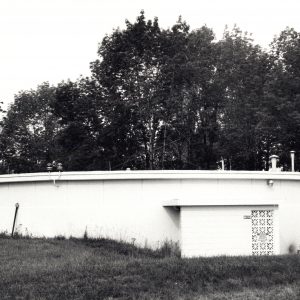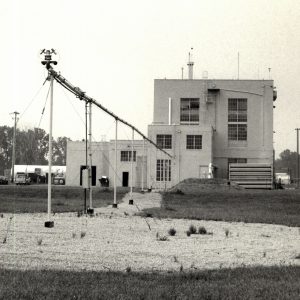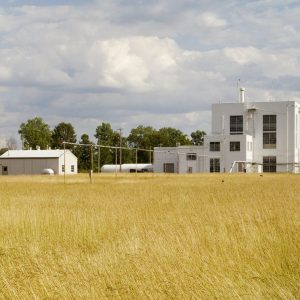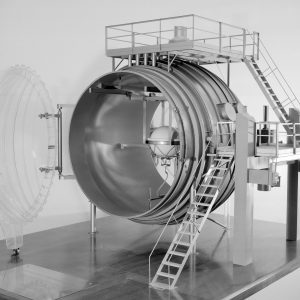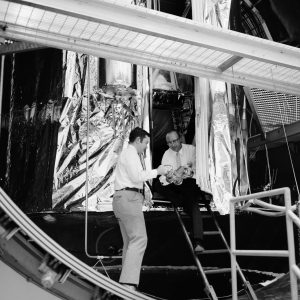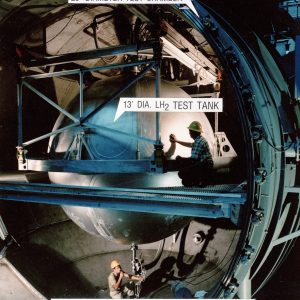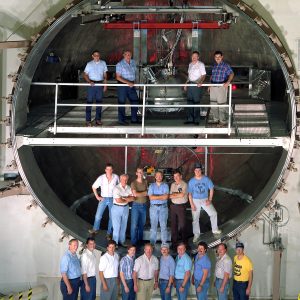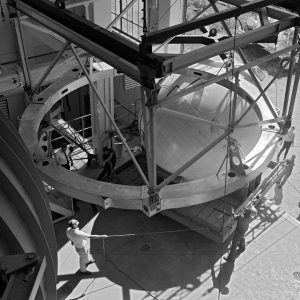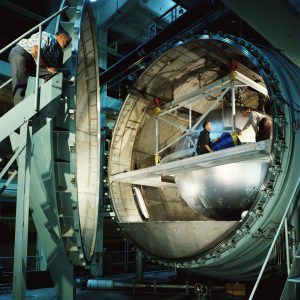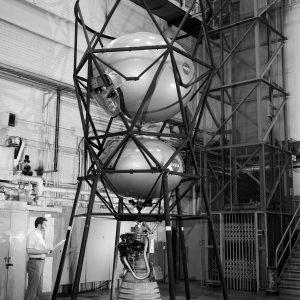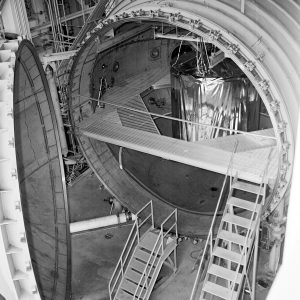K Site – Cryogenic Propellant Tank Facility
K Site was designed to test cryogenic propellant tanks up to an 18-foot diameter in a simulated space environment. These studies included proof testing ground storage devices, tank pressurization issues, and the development of long-term insulation systems.
Physical Description: K Site was located on Ransom Road just northwest of the main Rocket Systems Area. The facility had a 9500-cubic-foot, 25-foot-diameter spherical chamber with a 20-foot-diameter access door. The facility’s main structure was a two-story concrete building that formerly served as a boiler plant for the Plum Brook Ordnance Works (PBOW). The test chamber occupied the western half of the building. The eastern half was a large clean area and overhead crane for test preparation. A small addition was added to the north wall for instrumentation equipment. NASA built an external 626-square foot semicircular control room southwest of the main building and a shop and burnoff line to the west.
Operation: The staff installed the experimental tank into the test chamber, filled the tank with hydrogen, allowed it to settle, and adjusted the pressure and temperature to the researcher’s specifications. They then opened the tank vents, activated the data-recording equipment, and initiated the test. K Site included a large hydraulic actuator that could simulate launch vibrations and a cryoshroud that simulated the cold temperatures of space. Data-recording equipment tracked the hydrogen boiloff rate to determine the effectiveness of the insulation.
Tests: Researchers used K Site to determine the boiloff rates of different size tanks; to study insulation methods such as use of multilayer blankets, self-evacuating layers, spray-on materials, and shadowshields; and to test propellant transfer between two tanks.
- 1966–67: 5-foot tank expulsion
- 1967: Boeing 9-foot tank acceptance test
- 1967: 13-foot tank expulsion
- 1968: Lockheed 7-foot tank multilayer insulation
- 1968–69: 5-foot tank methane expulsion
- 1969: Calorimeter with spiral-wrapped multilayer insulation
- 1969: Arthur D. Little 8-foot cryoshroud leak test
- 1969–70: Calorimeter with self-evacuating multilayer insulation
- 1970–71: Calorimeter with self-evacuating multilayer insulation
- 1970–71: Arthur D. Little shadowshield in 8-foot cryoshroud
- 1971–72: Vertical calorimeter with 160-layer insulation
- 1973–74: Cryogenic Storage Test Vehicle (CSTV)
Documents
- K Site Description and Floor Plans
- K Site Status Reports (1964-74)
- Large Scale Cryogenic Fluid Systems Testing (1994)
- Pressurant for Discharge of Methane From Tank (1974)
- Hydrogen Discharge of Hydrogen From 5-foot Tank (1974)
- Helium Discharge of Hydrogen From 5-foot Tank (1970)
- Hydrogen Discharge of Hydrogen From 13-foot Tank (1969)
- Helium Discharge of Hydrogen From 13-foot Tank (1970)
- Multilayer Insulation Containing 20 to 160 Layers(1974)
- Lightweight, Self-Evacuated Insulation Panels (1970)
- SEMI Prefabricated Panels for Cryogenic Tanks (1968)
- Performance of Replaceable Multilayer Insulation (1977)
- Integrated Thermal Protection for Long-Term Storage (1977)

